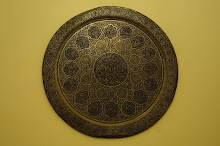 Tel Arsuf or Appolonia is an ancient site 15 km. north of modern Tel Aviv. It was originally colonized by the Phoenicians who named it after their god Reshef, god of thunder and war.
Tel Arsuf or Appolonia is an ancient site 15 km. north of modern Tel Aviv. It was originally colonized by the Phoenicians who named it after their god Reshef, god of thunder and war.The site took on the name 'Arsuf' from the god's name and the Greeks in turn named it Appolonia after their god Apollo. Arsuf/Appolonia was later colonized and developed by Byzantines, Muslims and the Crusaders who took it in 1101, naming it Arsur and building a large castle there. In 1261, the city was ruled by the Knights Hospitallers when the great Mameluke Sultan Baibars captured it and razed the fortress.
The castle stood on a cliff overlooking the Mediterranean with a view of magnificent sunsets that surely have not changed over time. Through feast and famine, the castle and the site have hosted the whole panoply of human life. During Arab and Muslim rule, some residents of Arsuf became famous scholars while many gained their livelihood from farming, crafts and trade. Later, during the Crusader period, John of Ibelin, Lord of Beirut, became Lord of Arsur in 1207 after he married Melisende of Arsur, and they had a son, John of Arsur.
What the builders of the fortress, and all who lived there, whether Greek or Crusader, did not notice however, while looking out onto the exciting sea, was that their home stood on a cliff of disintegrating sand.
Slowly, over time, the winds and tides eroded the cliff on which the castle stood, and the great fortress fell into the sea below.
















No comments:
Post a Comment